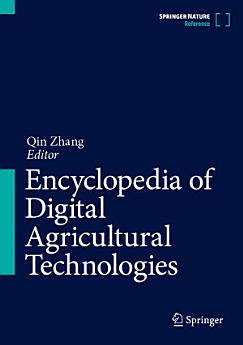Encyclopedia of Digital Agricultural Technologies
About this ebook
Springer Major Reference Works platform offers Live Update capability. Our reference work takes full advantage of this feature, which allows for continuous improvement or revision of published content electronically.
The Editorial BoardDr. Irwin R. Donis-Gonzalez, University of California Davis, Dept. Biological and Agricultural Engineering, Davis, USA (Section:Postharvest Technologies)
Prof. Paul Heinemann, Pennsylvania State University, Department Head of Agricultural and Biological Engineering, PA, USA (Section: Technologies for Crop Production)
Prof. Manoj Karkee, Washington State University, Center for Precision and Automated Agricultural Systems, Washington, USA (Section: Robotics and Automation Technologies)Prof. Minzan Li, China Agricultural University, Beijing, China (Section: Precision Agricultural Technologies)
Prof. Dikai Liu, University of Technology Sydney (UTS),Faculty of Engineering & Information Technologies, Broadway NSW, Australia (Section: AI, Information and Communication Technologies)
Prof. Tomas Norton, University of Leuven, Dept. of Biosystems, Heverlee Leuven, Belgium (Section: Technologies for Animal and Aquatic Production)
Dr. Manuela Zude-Sasse, Leibniz Institute for Agricultural Engineering and Bioeconomy (ATB),Precision Horticulture, Potsdam, Germany (Section: Engineering and Mechanization Technologies)







